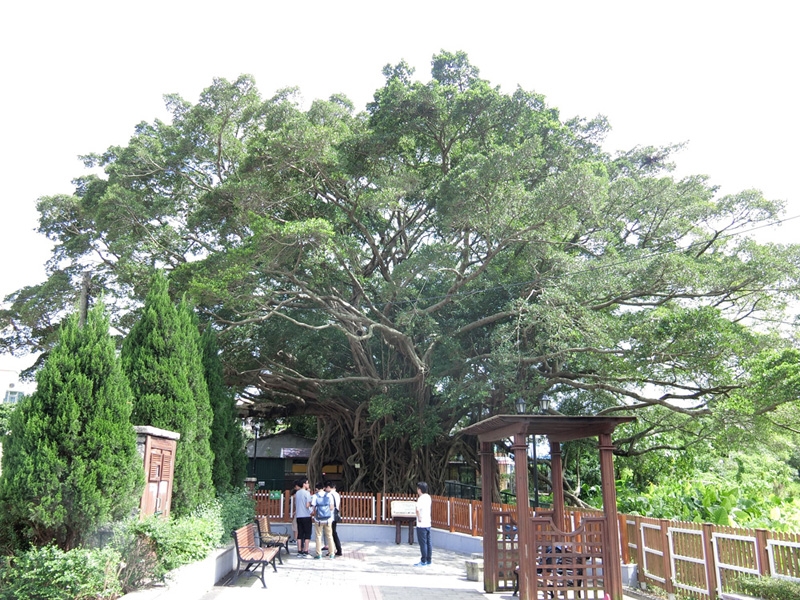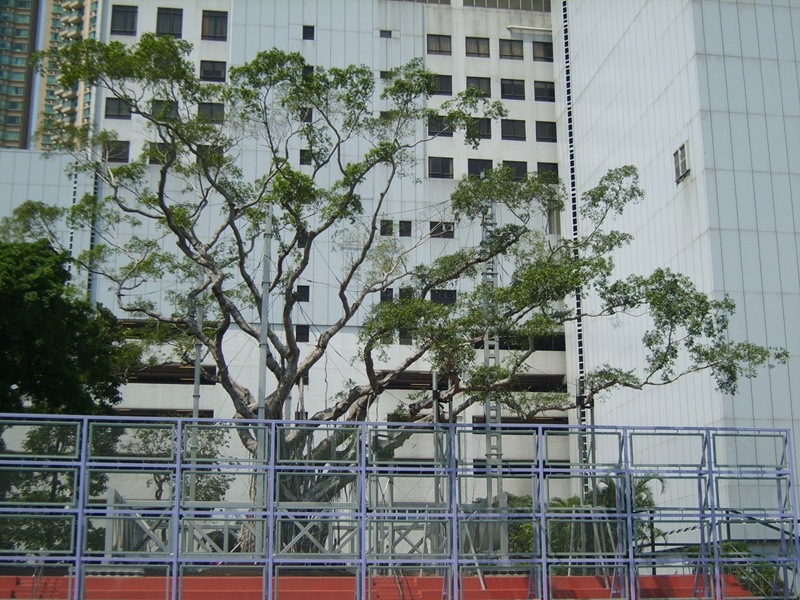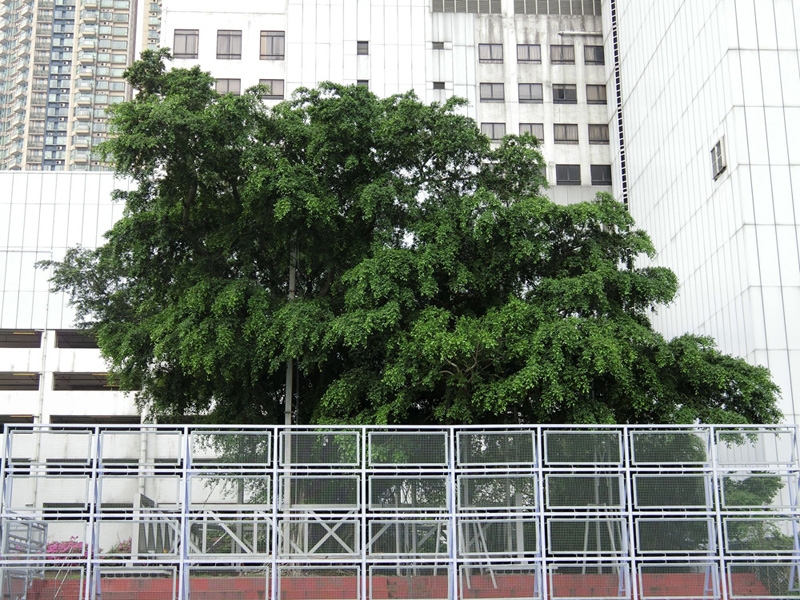In July this year, many tree workpractitionersand friends from the media asked me whether a dozen of OVT diagnosed as Brown Root Rot Disease, includes Kam Tin Tree House which hasgreat conservationvalue (Figure1), are going to be removed. And added that according to the minute of the Expert Panel on Tree Management, I also agreed with the relevant decision. I was shocked after hearing this news and decided to find out what happened.

Figure 1
The issue has attracted widespread attention and reports. After visiting these important tree resources with my colleagues from Public Affairs team, we learnt more about their circumstance and the care they needed.We also reiterated at the end of August in the meeting of the Expert Panel on Tree Management that each tree is unique and should be handled separately if care is needed or whether it needs to be removed. At last, the “sick” OVTs were just like what has been mentioned on July 24 from the blog of the Secretary of Development Bureau, “We will consult expert advice on the extent of infection of each individual OVT so as to take the most appropriate measures”. Moreover, the Secretary also puzzled why the Panel members misunderstood their works arisen in the process.
At present, although the trees have been “saved” temporarily, this incident could be used to understand and discuss the inadequacy of the care of Brown Root Rot Disease in Hong Kong. (Secretary’s Blog,All about Brown Root Rotdisease www.devb.gov.hk/tc/home/my_blog/index_id_188.html)
The incident happened at the end of June, a tree management contractor received work order from government department to submit and propose a timetable for removal of some OVTs with Brown Root Rot Disease. What more “puzzling” is that the minutes which has not yet been formally adopted by the panel was already sent to the contractor from relevant government department. It was stated in the minutes that “They in-principle agreed to the removal of the 16 OVTs while reminding that GLTMS and the tree management departments of the importance of adequate publicity before removal …”. This statement is just like a strong evidence that telling people the Panel agreed with the removal of trees. That is why many people have made inquiries with me as one of the Panel members.
Having the arrangement of the removal date, together with the “support from the Panel”, how people would not believe the removal was imperative. Thus, the incident has already been widely discussed within the industry and the social network in only a few days. At the same time, I also realize the incident.
“Is there any miscommunication?” In the Panel meeting, the bureau did report that there were 16 OVTs (later increased to 19) diagnosed with Brown Root Rot Disease. Also, it is discussed that since the discovery of Brown Root Rot Disease in Hong Kong for more than 8 years, we still do not have a more effective treatment. Since the rapid increase in cases of Brown Root Rot Disease and without an effective treatment, in order to protect other OVTs and tree resources, after having a short discussion among the Panel members, based on this narrow range of discussion, “In principle, panel members agreed to remove the OVTs which are diagnosed with Brown Root Rot Disease.”
However, this cannot be interpreted unilaterally as to remove all the diagnosed OVTs in haste. Just like the case I have pointed out in the meeting, after several years of care, the circumstance of the OVT in Kowloon Park (OVT number: LCSD YTM/97) has been stabilized in recent years, and even having an obvious sign of recovery. This is a very rare case in which the inflected tree still survives. Could we find a way to make control from the experience of this King of urban tree? Furthermore, OVTs are one of Hong Kong’s precious and non-renewable resources, which should be removed only if there are no other alternatives. Tree management measures as well as the reasons behind the final decision should also make clear for the general public to obtain a thorough understanding. In fact, if Hong Kong wants to master the precaution, knowledge and technique to cure Brown Root Rot Diseases in a long term, it needs to be built up from practical works and experiences. If removal of trees is the only option when trees get “sick”, Hong Kong will never be able to gain valuable experience. But of course, it is never easy to cure and suppress the spread of Brown Root Rot Diseases. Many seemingly successful cases of cure have not been pathologically determined, such as funguscannot be found under sensitive detection (e.g. DNA test), which is one of the ways to test the effectiveness of the cure. Only determiningfrom visual observation cannot be a valid method. The precaution of Brown Root Rot Diseases is still the world's ongoing research topics. Just like many other plant diseases, there are still no effective and reliable treatments.

OVT in Kowloon Park: 2009

OVT in Kowloon Park: 2016
The news about removing the trees were more widespread within 3 weeks from late June to mid-July. Development Bureau did not take the initiative to respond, but answer the media inquiries if there wereany. However, the Bureau has not made it clear that this is only a misunderstanding. So, is this a fact? As a member of the Panel, I even also have this thought. Under this circumstance, it is very reasonablefor the public to misunderstand the case, compared with it, not having a proper explanation of the incident for a few weeks may be more puzzling. Are the trees going to be cut but just being held on the final stage?
Despite the infected trees can be retained for the time being like what the Secretary said, if the trees continue to be swallowed by diseases, the result will be no different. During the visit to these 19 OVTs with Brown Root Rot Disease, it is found that there are still lots of deficiencies in tree management, disease prevention and control, so as public education. If we even cannot achieve the basic standard, just to cut all the infected trees today, the Brown Root Rot Disease can never be controlled in Hong Kong. On the contrary, doing something improper may only deteriorate the situation.
We will discusstheserelated management problemswithdifferent casesin the next .

